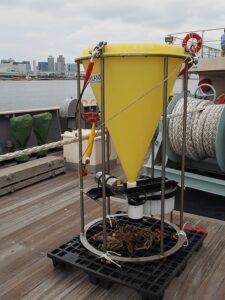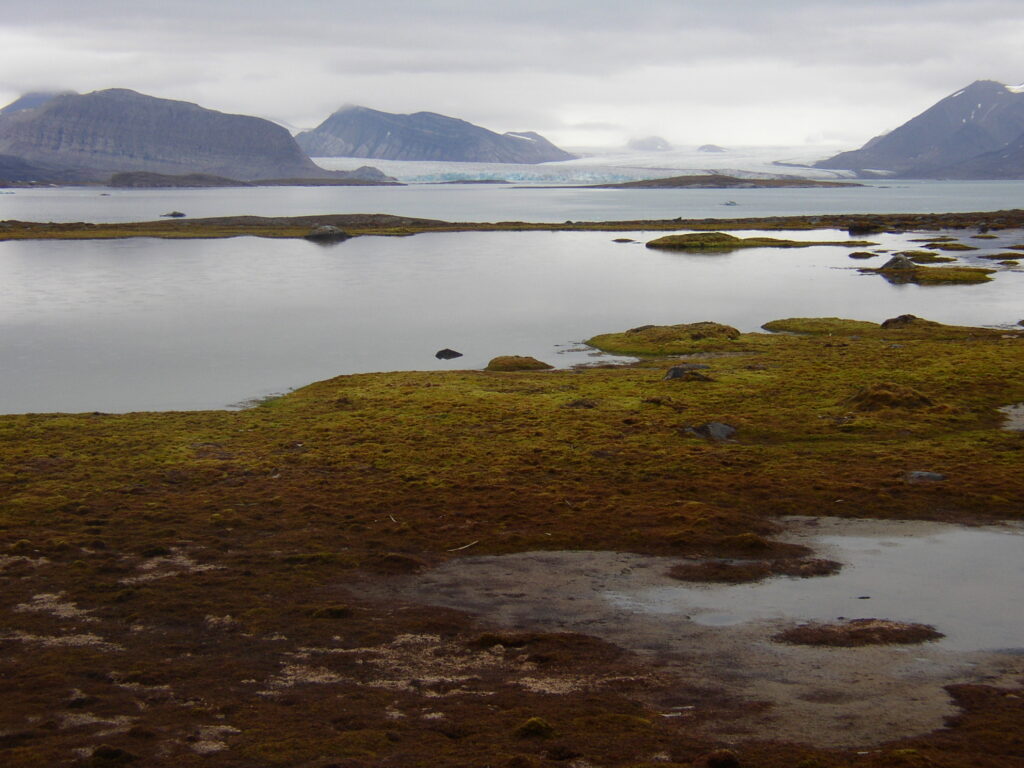Weydmann‐Zwolicka, A., Cottier, F., Berge, J., Majaneva, S., Kukliński, P., & Zwolicki, A. (2022). Environmental niche overlap in sibling planktonic species Calanus finmarchicus and C. glacialis in Arctic fjords. Ecology and Evolution, 12(12), e9569. https://doi.org/10.1002/ece3.9569
In the frigid Arctic Ocean, small crustaceans called copepods are an essential food source for larger animals, including fish, seabirds, and even whales. In much the same way that bears fatten up for the winter, these little zooplankton eat phytoplankton and become extremely fat; their dense lipid stores help them to survive the winter, but also make them a tasty and energy-rich meal for predators.
Two species of large copepods dominate in the North Atlantic and Arctic Oceans, Calanus finmarchicus and Calanus glacialis. C. finmarchicus is native to the Atlantic Ocean but is also abundant in the southern Arctic Ocean. The northern range of this species is limited by short summers and low temperatures, which restrict its ability to reproduce and overwinter. C. glacialis, on the other hand, is adapted to the ice-covered Arctic and has a more northern distribution; C. glacialis also grows more slowly than C. finmarchicus, and reaches larger sizes.
Despite these differences, C. finmarchicus and C. glacialis are often found in the same water masses—or, as an ecologist might say, they occupy similar “environmental niches.” A niche refers to the set of environmental conditions (such as temperature and salinity) in which a species lives. When the niches of two species overlap, it means they have to interact with one another and compete for resources. One species may eventually out-compete the other and force it to change its distribution—and this process may have important consequences because the Arctic is rapidly warming and species’ ranges are changing. C. finmarchicus is spreading further and further north, which might displace C. glacialis. Therefore, scientists set out to understand how much the niches of C. finmarchicus and C. glacialis overlap in the Arctic Ocean.
Big questions need big data

To get a high-resolution picture of environmental niches, the scientists needed high-resolution environmental data. Most studies in the Arctic are limited to the spring and summer when the waters are ice-free and accessible. To get year-round measurements, scientists in this study used data collected automatically from permanent structures called moorings, which collect continuous information about temperature, salinity and chlorophyll concentrations. Animals were collected using sediment traps, which are just big bottles placed in the water that collect sediment and animals over time. This allows scientists to easily sample the zooplankton community at a certain depth over long periods of time.
This study was conducted at two different fjords, one of which (Kongsfjorden) is relatively “Atlantic” in character, with warmer and saltier waters. The other fjord, Rijpfjorden, is colder and ice-covered for much of the year. Both species co-occur in both fjords.
We’re not so different, you and I
You might expect that, if two competing species live in the same area, they would occupy different niches and perhaps separate themselves in time or space. In this case, however, the niches occupied by C. finmarchicus and C. glacialis were nearly identical. Development of the two species was also synchronized, meaning that babies and juveniles of both species were present around the same time within each fjord, and adults of both species co-existed later on.
The similarities of the two species within fjords were especially striking because the fjords themselves are very different from one another. The fact that both species had very similar niches to one another across two environments with distinct conditions strongly suggests that Calanus species are highly plastic. Plasticity means that organisms can change their traits and lifestyle depending on the environment… so, despite C. finmarchicus generally occupying warmer waters and C. glacialis generally occupying colder waters, both specie adopted similar lifestyles when they occurred in the same place. In other words, both species may be able to adapt and succeed in a wide range of environmental conditions.

If the two species are so similar, what’s different about them? Well, C. finmarchicus is indeed expanding further north as the planet warms. If the overall zooplankton community shifts from the larger C. glacialis to the smaller C. finmarchicus, there might be less high-quality food available for predators. However, there currently aren’t any signs that C. glacialis is decreasing in abundance. In any case, this study highlights the fact that we still don’t understand basic aspects of the ecology of marine Arctic species. If scientists studied other locations in different parts of the world, or looked at additional variables, it’s possible that differences between species would become apparent.
Cover image by Terje van der Meeren, Havforskningsinstituttet, Creative Commons

I am a PhD student at MIT and the Woods Hole Oceanographic Institution, where I study the evolution and physiology of marine invertebrates. I usually work with zooplankton and sea anemones, and I am especially interested in circadian rhythms of these animals. Outside work, I love to play trumpet, listen to music, and watch hockey.

